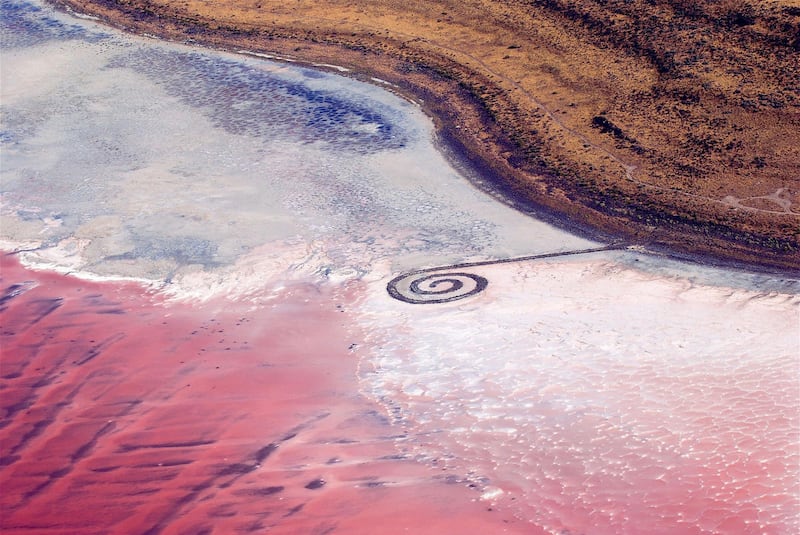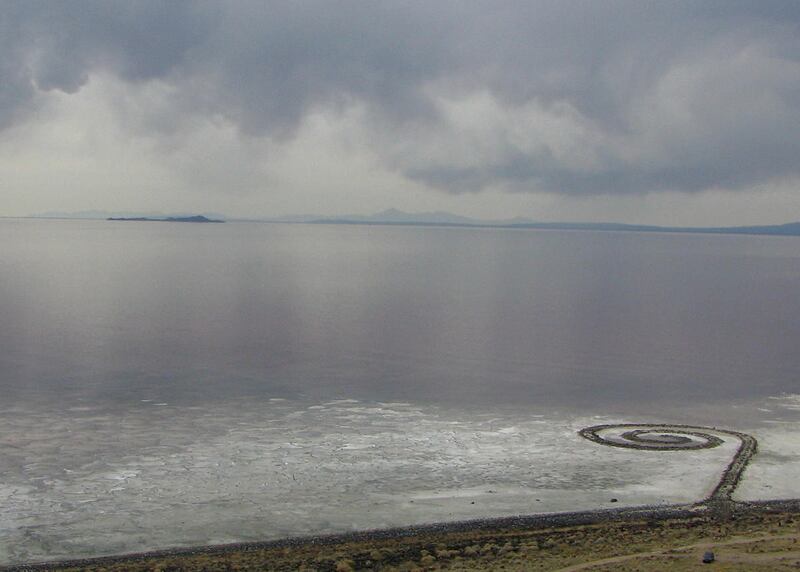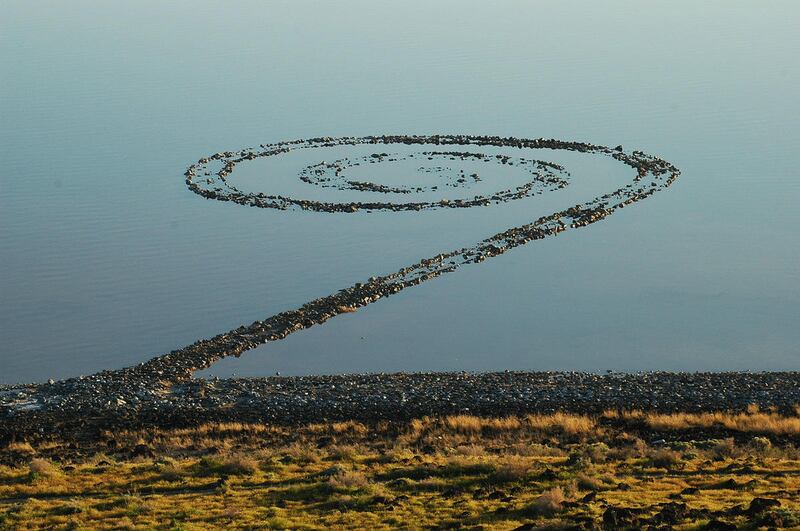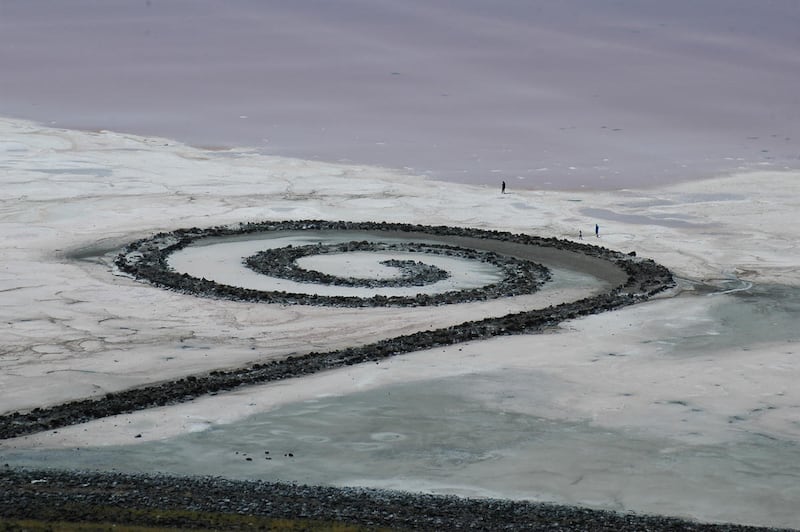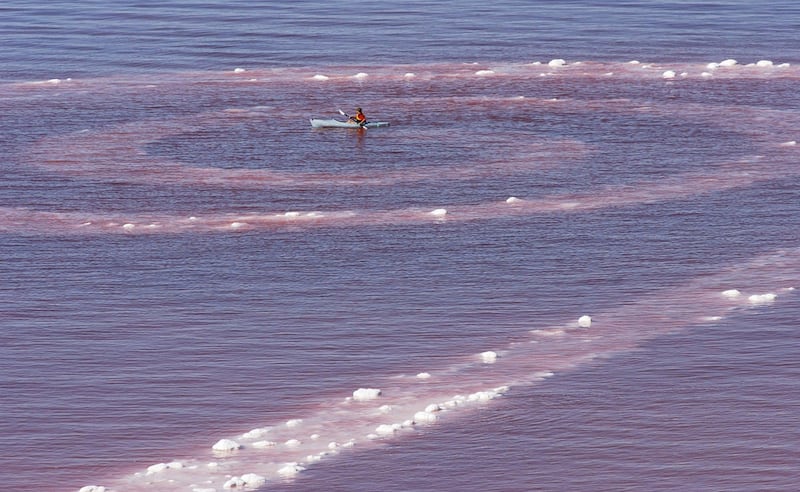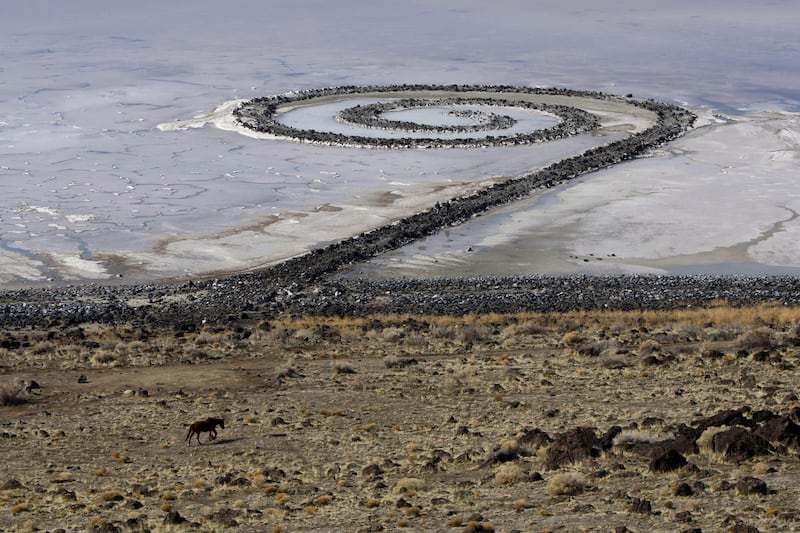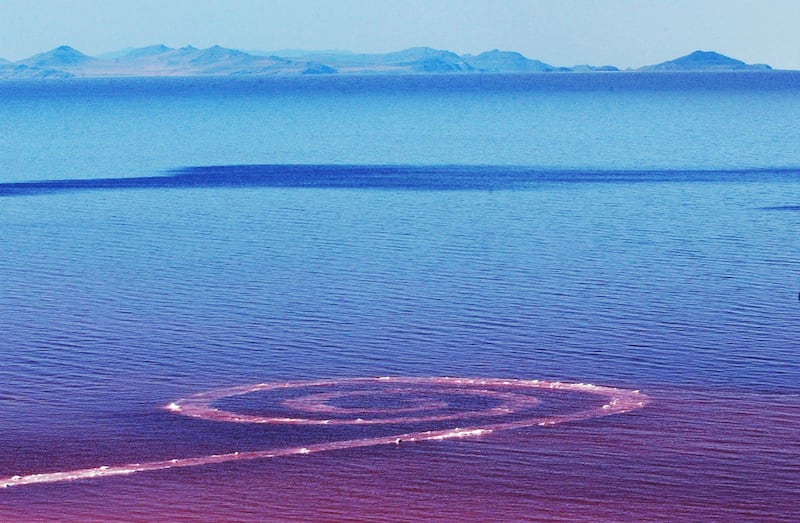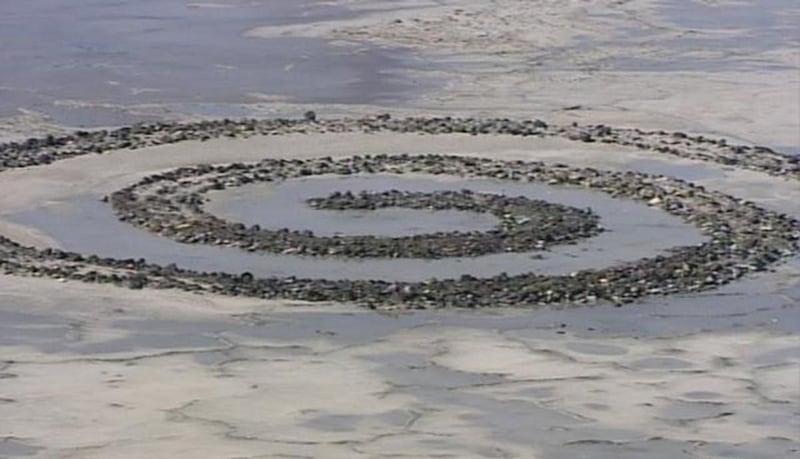SALT LAKE CITY — Nestled amid the rocky shores of the Great Salt Lake’s Rozel Point, the Spiral Jetty is more than simply artwork; it’s a testament to the seemingly infinite wonders of nature.
Artist Robert Smithson constructed the spiral-shaped land art sculpture in 1970 after a detailed and prolonged investigation of the region.
As an avid reader and intellectual, Smithson was the leading figure of the land art movement of the 1960s, which sought to extend art outside the confines of galleries and museums. Land artists pursued expansive and often unusual settings for their works, crafting what they deemed “earthworks,” which were intended to alter over time alongside the landscape.
Just as we consider paint an artistic medium, land artists thought of natural processes such as sedimentation, seasonal alteration and human interaction to be mediums that alter both the shape and meaning of the work over time. As such, earthworks radically challenge the traditional notion of artworks as delicate material items housed behind glass protectors in a museum.
Instead, land artists intended their works to be experienced rather than merely seen, allowing individuals to rise above the role of spectator. While there’s undoubtedly a regal demeanor that accompanies viewing art in a museum or gallery, getting to the Spiral Jetty requires a map, a reliable vehicle and some really solid shoes.
Born on Jan. 2, 1938, in Passaic, New Jersey, Smithson's East Coast upbringing generated a strange obsession with abandoned industrial sites, mines and quarries, which he playfully dubbed “Non-Sites.” It was this peculiar type of landscape — one that evidenced the ruins of forgotten dreams and human intervention — that fascinated Smithson much more than the highly cultivated, “ideal” landscapes of National Parks and botanical gardens.
This interest in “Non-Sites” quickly made Smithson stand out among other artists of his generation and led to a number of international projects whereby natural materials such as rocks, mud and sand were transported from their original location into the art gallery setting.
There was a particular mischievousness about this act of removing mundane materials from their original source to a pristine white gallery space. Yet Smithson detected something rather magical in the mundane, opting to focus his artistic energies on sites that otherwise may have been forgotten.
It is precisely this interest in the odd and unconventional that led Smithson to Utah. His attraction to the Great Salt Lake was multifaceted, as the region’s geological wonders and cultural history fascinated him. By the time of his arrival in 1970, Smithson was lauded as an artist of great critical stature.
With the idea of the earth as both a medium and a canvas of art, Smithson hired local construction foreman Bob Phillips to help him construct the 1,500-foot-long Spiral Jetty from nearby rocks secured in place by concrete weighted to the bottom of the lake.
In addition to earth, Smithson also considered time to be another art medium, with its unbiased and unyielding alteration. Inevitably, all viewers of art carry with them a bias — a form of subjectivity that alters the way they interact with an image or sculpture, for example.
Smithson enjoyed this idea of ambiguity, which allows individuals to each take something radically different from the experience of interacting with the artwork. In the Spiral Jetty, time is the ultimate alteration that impacts the ways in which various people see and experience the earthwork.
Looking at various images of the Spiral Jetty makes evident its constant state of alteration. In some seasons, the body of the land art sculpture has been seen completely covered in crystalized salt, surrounded by halophilic microoorganisms that render the lake’s water pinkish in hue, while in others, its form was completely submerged above the lake’s typical 35-foot level.
While remote and seemingly unbeautiful by traditional standards, the area of Rozel Point, where the Spiral Jetty is located, retains a fascinating history — one that Smithson explored with great intellectual curiosity. For one, the region is home to the famous Golden Spike National Historic Site — the location at which the Union and Central Pacific railroads converged in 1869. Before this, the region was home to ancient Native American and later white Western inhabitants.
It’s the bountiful assortment of actors — both human and microscopic — in such a seemingly unsightly area that captivated Smithson. The Spiral Jetty therefore stands as an ultimate tribute to the regional history of an area that, as an outsider, enthralled Smithson.
In crafting an earthwork that will inevitably change with the land, Smithson hoped to inspire others to experience the artwork for themselves, and in doing so, to learn to appreciate pockets of untamed landscape in their own backyards.
Scotti Hill is an art historian based in Salt Lake City. She has taught courses in art history at Westminster College and the University of Utah, and currently works as a writer and curator.

